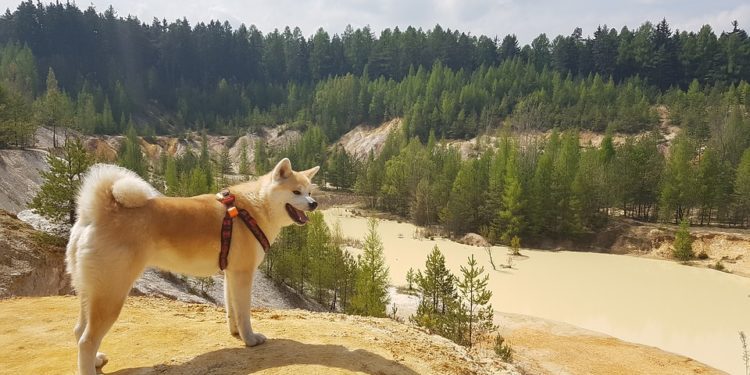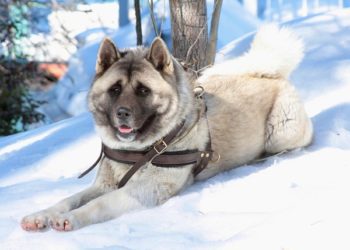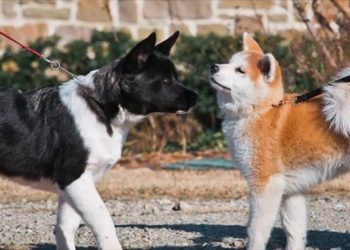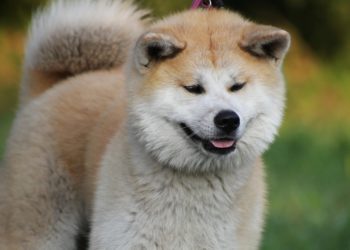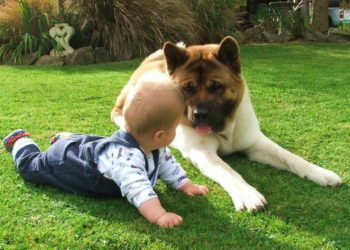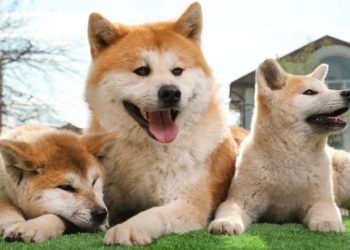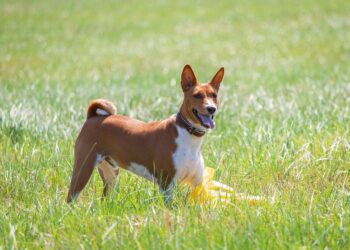Japanese island Honshu is the place of origin of the breed Akita, and now it is becoming a favorite pet dog among the peoples of the UK and various parts of the US. The dogs, which are mostly found in cold weather, need to apply some technique when they are brought to hot and humid zones.
Contents
Are Akitas able to live in hot weather?
Akitas are double-coated, as they are originally from a cold mountainous region. So they are generally built in such a way that they can tolerate the coldness. But the strange thing is, they can manage to survive in the hot climate now. Though you need to keep them inside most of the time as the scorching sun is harmful to their health. If the weather is hotter than 86 degrees Fahrenheit then it can affect the health of the dog.

Does an Akita get cold?
Akitas love the cold weather so there are few chances that they would get cold. They are originated in a place that has harsh winters and so the cold can not bother them much. But when it is winter, do not keep it outside for long. This breed of dog loves the companion of the humans and thus they would miss your company if you keep them outside all the way.
How can Akitas manage to live in hot weather?
Akitas can change the body temperature and adjust with the outside temperature when it is too hot for them. In this process, they need to spend some calories, and then they get adjusted to the temperature of the ambiance.
But when the temperature is too high, they get heated as the equalization system does not work anymore.
What kind of weather is good for Akita?
Akitas are comfortable in cool or temperature weather like 24 to 30 degrees Celsius. But if the temperature is too high, then it can make the Akita uncomfortable, and thus, they should be shifted to a shaded place.
How can the Akitas cool down?
Sweating is a way by which all the creatures on land cool down. In the case of Akitas, sweating is restricted to only the nose and paws. Also panting is a way by which the dogs try to keep the temperature of the body balanced with the outer environment.
What are the reasons that prevent the Akita from cooling down in hot weather?
When the Akita gets older, it loses the power of cooling as fast as it would have done when it was young.
Some cardiovascular problem prevents the Akita from cooling faster. As cooling involves panting and that needs smooth action of cardio muscles, the problem of this area will prevent the dog from panting for a long time. Thus the cooling procedure will be delayed.
Obesity is a factor for the Akitas when it comes to cooling down. If you have adopted an Akita and you are staying in a warm zone, you must not let it be overweight. An obese dog will suffer from more problems and that will also make it hotter. It will take longer to cool down.
Humidity is a problem when it comes to the cooling down process. In a hot area, the Akita will still manage to cool down, but when the environment is humid, it will not be cooled even after sweating. Hot and humid weather is not suitable for the upbringing of Akitas.
Make your Akita drink a lot of water and liquids when it is hot outside. Only a well-hydrated dog will be able to sweat and that will only keep the body temperature lowered. So without hydration, the process will not be possible.
If the dog is kept at a place where there is not enough ventilation, then it may be difficult for the dog to cool down by panting or sweating. This is a rather unhealthy atmosphere. So you should keep the dog in a shaded place but that place should have ample air ventilation opportunity.
How does the thermoregulation process work for Akitas in warm weather?
Akitas are double-coated dogs, and the coats, each of them, have their own purpose. The undercoat of the dog is of thick hair. As Akitas are originally from the cold mountains of Japan, they protect themselves with the help of the undercoat from the chilly cold winds. Also, this thick layer works as an insulation sheet and protects the heat of the body in the chilled winters. Also, all kinds of insects and even UV rays are guarded by this thick underlayer.
When the weather changes to spring or summer, the bottom layer sheds, and the Akitas only have their upper layer with comparatively bigger furs. This layer of hair allows the air to move through the body and thus they feel comfortable and more adjusted to the warm weather.
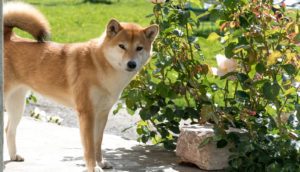
Can you shave off the coat of your Akita to keep it comfortable in summer?
No, you cannot do that. Akitas’ coat protects it from the winter and keeps it thermoregulated throughout the year. But if you shave the coat off, the two different layers will not grow at the same speed and at the same time. Also, the thickness of the layers will be mismatched. This way you will be damaging a natural system of thermoregulation of your dog.
How can you keep the Akita happy in summer?
If you want to help it feel cool in the months of hot summer, brush the coat every day or on alternative days. This will keep the coat smooth and also the loose strands of hair will come out. This is the way to lighten the burden of thick coat hair for the Akita, so it will feel breezy when the wind will pass over its body.
What happens if the Akita cannot fight with the hot weather of summer?
There are few common problems which are faced by many dogs, and especially Akita when the weather is too hot. Among them, dehydration is one of the most common problems. There are certain symptoms that will help you understand that your pet Akita is suffering from dehydration.
When you see the dry and pale nose of the dog then you can understand something is not right with the dog. By the thumb rule, the nose of the dog should always be wet or moist. If it gets dried then it means the dog is lacking some moisture in its body.
Check the pulse rate of the dog when you see it slowing down and moving lesser than usual. If the pulse rate is faster than the regular times, then you can decipher that the dog is suffering from some serious problem.
The eyes of the dog should be bright and cheerful, but if you see the eyes look sunken and dull, then also it may be a symptom of dehydration.
Another severe cause of worry will be when the dog stops urinating or the amount of urine is getting less. This is a sure sign that the dog is not having enough hydration or the weather is not suiting it. Get it checked by the vet as soon as possible and start adequate medication.
Often the skin elasticity is seen decreasing among the Akitas, during the months of summer. This happens due to dehydration and you should start giving it ample water and other liquids in the diet to make it steady and healthy.
What happens when the Akita gets overheated during summer?
This is a serious problem and it may lead to fatal consequences. If you feel that your Akita is unable to take up the heat and is feeling restless, then check if the below symptoms are present in it or not.
When the Akita is seen drooling or panting too much, that means it has got overheated. Also, vomiting, diarrhea, and various other digestion-related problems are symptoms of overheating. If you did not make any drastic change in the diet plan of your Akita and it is showing a lack of interest in its diet, then surely it is having some digestion problem which is due to the overheating.
You may see the Akita moving with discomfort and sometimes losing its balance. The situation may be caused by overheating which should not be neglected at any cost.
The Akita, when you feel its body, may seem hot. Also, you can check the temperature by touching it or using a proper dog thermometer, to know if the dog is having a feverish body temperature. This way you will be able to understand that if the dog is suffering or not.
How can you protect the Akita in the months of summer?
Protection from the heat is the best thing you can offer to your loving pet dog Akita during the summer months. Giving it cold water once in a day or making a nice place for resting in a shaded kennel will be something ideal for the dog.
Also, you can often put wet towels on the body of your dog to make it feel cool. This way the body heat of the dog will be lessened. In case it suffers from the hydration or overheating problem, you need to provide it with food and hydration in form of an intravenous process. This should be done under a vet’s guidance and as per his prescription.
More:


